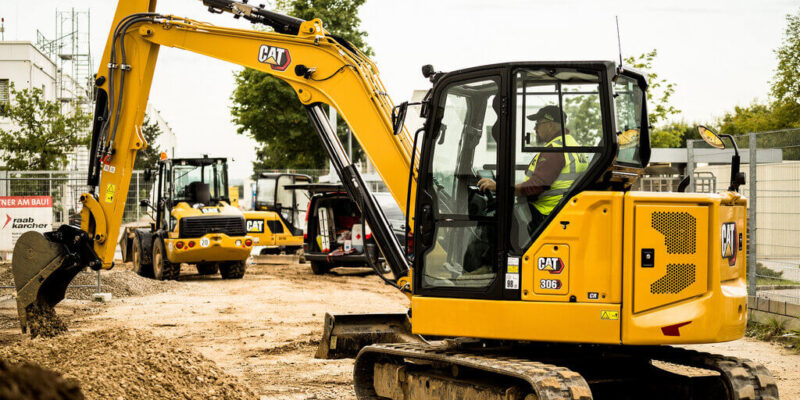Mini excavators are powerful machines that can help you easily dig, trench, and remove dirt. They are compact, versatile, and efficient, making them popular among contractors, landscapers, and DIY enthusiasts.
However, operating a mini excavator can be challenging, especially if you’re new to the equipment. That’s why we’ve compiled a list of tips to help you operate your mini excavator safely and effectively. Here’s everything from pre-operation checks to proper operating techniques and maintenance tips. By following these tips, you can make the most of your mini excavator, minimize downtime, and avoid costly mistakes.
Familiarize Yourself With the Controls
Before you get started with your mini excavator, it’s essential to familiarize yourself with the controls and make sure you understand how they work. Take the time to review the operator’s manual and go through the controls in detail. Ensure you understand what each control does and how it affects the operation of the machine. This will help ensure you can operate the excavator safely and accurately, minimizing risks and increasing productivity.
Some manufacturers offer tutorial videos or additional resources to help you learn the controls. In addition, many dealers offer hands-on training courses for new excavator operators, so be sure to inquire about available classes if you’re a beginner. Training is crucial for using your mini excavator for more complex tasks, such as digging foundations or hauling materials.
Perform a Pre-Operation Check
Before you start any job, performing a pre-operation check of the excavator is essential. This involves checking the fuel level, inspecting hoses and other components for wear and tear, and testing the controls to ensure they all work correctly. If you notice any signs of damage or wear, replace any damaged parts before proceeding. This will help minimize downtime and prevent costly repairs down the line.
Check the fluid levels and make sure they are filled to the correct levels. If necessary, add more oil or coolant before starting the engine. Hydraulic fluid should also be checked regularly to ensure the excavator operates efficiently. The tires and tracks should be inspected to ensure they are inflated properly and in good condition. This will help the excavator move smoothly, even over rough terrain.
Understand the Weight and Balance of the Machine
Understanding the weight and balance of your mini excavator before starting any job is essential. Knowing this information will help you determine the best way to move and position the excavator and which attachments you can use safely. For example, if the machine is loaded with too much weight on one side, it could cause instability and make it difficult to control. So, take the time to read the manufacturer’s weight and balance recommendations for your particular model before beginning any task.
You should also monitor the excavator’s weight as you work, ensuring it remains balanced throughout the job. This will help minimize strain on the machine and prevent accidents or damage. If you need to move a heavy load or use a large attachment, ensure the excavator can handle it safely. You may need to rent or buy additional equipment if you still need to.
Use Proper Operating Techniques
Once you’re familiar with the controls and understand the weight and balance of your mini excavator, it’s time to start operating the machine. Using proper operating techniques to maximize efficiency and minimize risks is essential. For example, always use the correct settings for your job and ensure you understand the proper operation of each control before starting any task. This will help minimize mistakes and ensure you can operate the excavator safely and effectively.
In addition, it’s important to move the excavator slowly and deliberately. This will help you stay in control of the machine and prevent accidents or damage. Finally, be sure to use the correct attachments for any given task. Using the wrong excavator attachments can cause strain on both the machine and operator, as well as reduce efficiency. So make sure you know which attachments to use for each job.
Plan Your Work Path and Set Boundaries
Before you start any job, you must plan your work path and set boundaries for the area you are working in. This will help ensure you stay within the designated workspace and prevent accidental damage or injury. Planning will also help minimize wasted time and effort operating the mini excavator. So take a few minutes to map out the job and decide which areas need to be cleared or dug up. You should also consider potential hazards like power lines or buried objects. Doing so will help keep you and those around you safe while working with the excavator.
Follow Safety Protocols
Any equipment used on a construction site, including a mini excavator, can be dangerous if misused. It’s essential to follow all safety protocols when operating the machine. Ensure you always wear proper safety gear, such as gloves, goggles, and a hard hat. Avoid moving parts of the excavator and keep your hands and feet clear of any pinch points. Practicing safe lifting techniques when moving heavy objects with the excavator is a good idea. This will help minimize potential injuries and ensure you can move the object safely and efficiently.
Conduct Regular Maintenance
Regular maintenance on your mini excavator is essential for maximizing its lifespan and ensuring it runs safely and efficiently. This includes inspecting the machine regularly for signs of wear or damage and changing the oil and filters at least once a year. You should also inspect any attachments you use with the excavator to ensure they are in good condition.
A specialist in excavator repair can help diagnose and repair any issues you may be having with your machine. They can also offer advice on keeping the excavator in top condition and preventing further damage or breakdowns. Always follow the manufacturer’s instructions for operating, maintaining, and storing the excavator. Doing so will help ensure that you and those around you stay safe while operating the machine.
By following these tips, you can ensure that your mini excavator is operated safely and efficiently. With proper training, planning, and maintenance, you can make the most of your excavator and get the job done right. If you need additional assistance or advice, consult a professional.










Comments